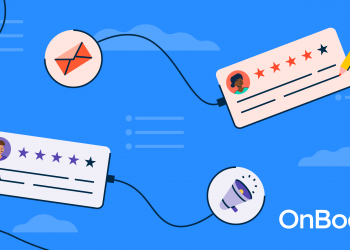Foundr Magazine publishes in-depth interviews with the world’s greatest entrepreneurs. Our articles highlight key takeaways from each month’s cover feature. We talked with Dylan Kelley, founder of Wavebreak, about the best way to build an effective email marketing and SMS program. To read more, subscribe to the magazine.
————
You’ve probably heard this story before.
A startup brand breaks out through social media ads. Big-budget competitors get in the game. Prices and competition go up. Now the startup can’t keep up with the monthly ad bill.
Sound familiar? It’s a trend exacerbated by IOS updates from Apple in 2021 that left ecommerce brands stalled or struggling to get the return on ad spend (ROAS) they had in the second half of the 2010s.
That’s why Dylan Kelley, founder of Wavebreak, is helping his clients optimize two traditional digital marketing channels—email and SMS.
Wavebreak is one of the leading agencies in the direct-to-consumer (DTC) space, helping ecommerce brands like Nutrafol, Dune, Halo Collar, and Ballsy grow their email and SMS programs.
Kelley developed frameworks that have helped ecommerce brands reinvigorate their marketing strategy, and it started by focusing on what wasn’t trendy.
A Ballsy Approach
One of Wavebreak’s best referrals is Ballsy, the makers of Ballwash, a trendsetter in the rise of alternative DTC brands using scroll-stopping messaging.
“When they came to us, they were getting open rates below 10 percent,” Kelley says. “They struggled to really find an agency who could match their fun, outgoing, and crazy kind of brand voice while also making sure it’s not too crazy.”
Wavebreak rebuilt Ballsy’s database from the ground up by targeting its most engaged subscribers and gaining a stronger sender reputation. Then, they slowly brought more subscribers into the segmentation and started testing everything.
“For them specifically, we found short and simple works really well; outlandish subject lines get the most opens.”
The team dug deeper into the customer behavior and found a chunk of their buyers were women buying for their spouses on holidays. So they created different messaging for male and female customers and have gotten more segmented over time.
“That’s one of the biggest things that I talk about is people get segmentation wrong,” Kelley says. “They think you have to get super granular, but we’ve tested that, and that doesn’t work. Instead, our approach is much more high-level.”
Kelley says that having a cohesive and advanced strategy was the key to increasing Ballsy’s open rates by 30 to 40 percent and ultimately tripling revenue.
The other email strategy that’s worked for Wavebreak’s clients is creative.
“Over the last six months, we’ve increased open rates by 30 to 40 percent not just by sending less content but better content,” Kelley says.
Kelley sees brands investing in email creative as an afterthought compared to social media ads. Instead, he suggests brands should inject personality into their copy and send emails people look forward to getting. He’s seen email revenue grow as much as 30 percent by improving the creative inside the email.
“So many people are flying by the seat of their pants,” Kelley says. “If they would slow down and be more strategic and focus on quality, they’d see way more results from email.”
Kelley says there is no silver bullet to creating an email strategy that drives revenue. But he believes segmentation and personalization are the future, thanks to the increase in actionable customer data.
“Humans can only do so much of [personalization], but technology can really automate the bulk of that and do it really well.”
The SMS Comeback
Kelley not only saw the untapped potential with email marketing but also SMS (short message service), Wavebreak’s other specialty.
Like email, brands have abused SMS and flooded their customers’ phones with unnecessary alerts, offers, and updates. That’s why Wavebreak implements SMS strategies that only send the most critical messages. These messages include welcoming people to the brand in question, post-purchase alerts, and abandoned cart messages.
Even Kelley was skeptical about SMS, but the numbers didn’t lie. He’s seen brands make $333 for every dollar they spend on it and abandoned cart open rates of 80 percent.
“We ramp brands from $0 to $40,000 a month in SMS revenue within 60 days,” Kelley says.
“And then we’ve ramped companies to 7-figure SMS channels within 120 days.”
Kelley says that SMS and email are most effective when they work together, and he sees clients’ performance doubling using both instead of one. That’s because the channels balance each other.
“The challenge with SMS is that you can only fit so much text in an SMS. You don’t have as much space as an email, but what’s great about it is it cuts through the noise at a really incredible level compared to email,” Kelley says. “What’s great about email is you can communicate a lot, and you can be a lot more visual.”
Source by foundr.com











